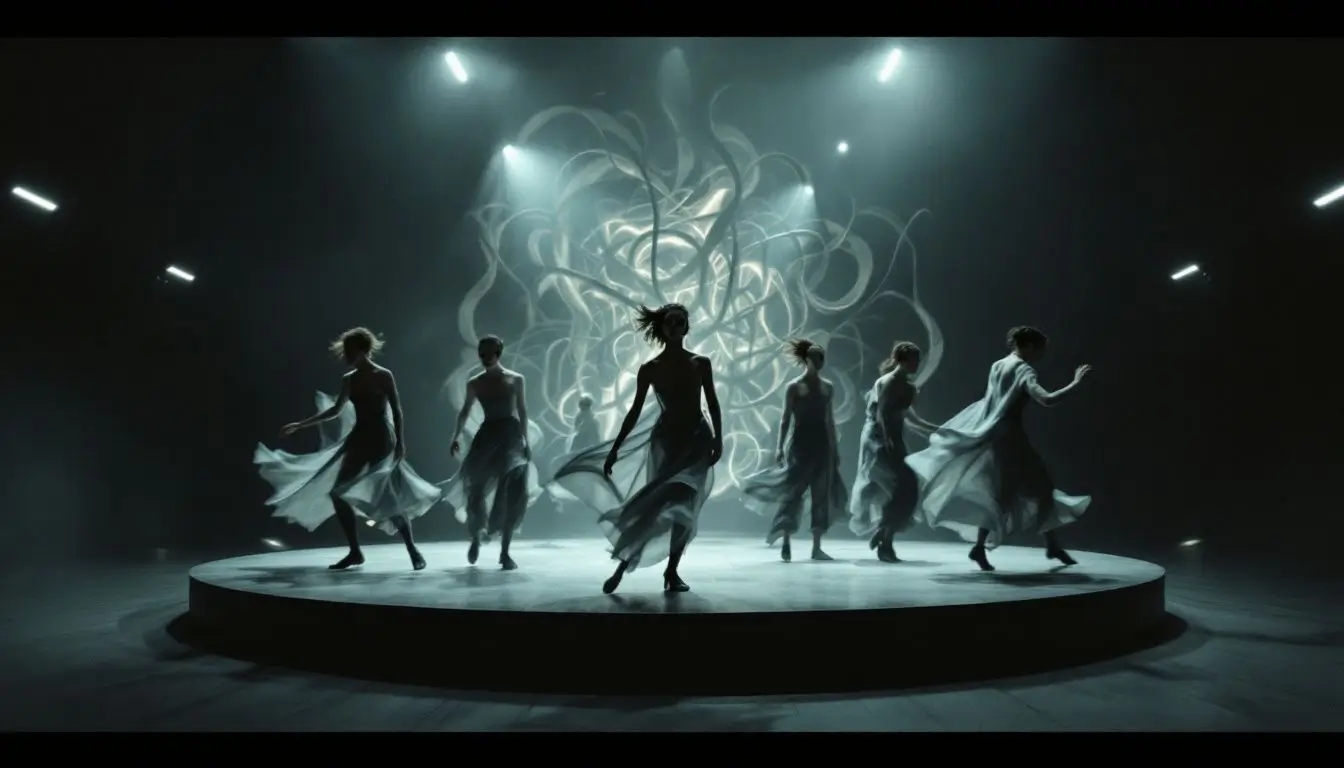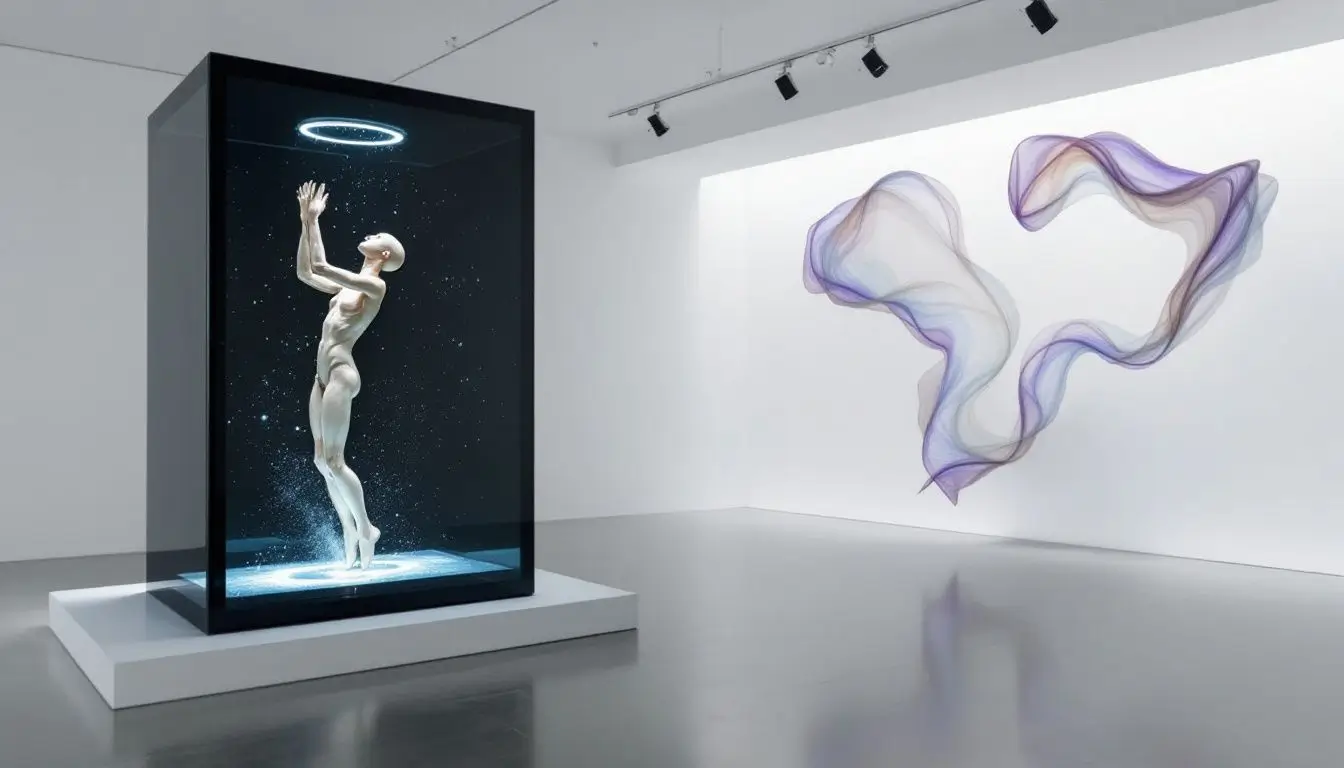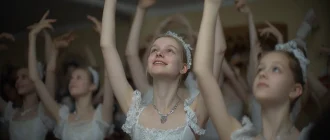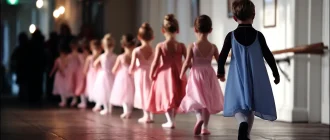Choreographer William Forsythe established that Forsythe, a leading dance community figure, has transformed contemporary ballet. Many wonder, “Who is William Forsythe?” Known for blending classical ballet with modern dance, he has collaborated with top ballet companies worldwide. His innovative works have made him a visionary in the dance world.
Key Takeaways
- An influential choreographer, William Forsythe began his professional journey with the Joffrey Ballet. He later gained prominence as a resident choreographer at Stuttgart Ballet, where he established his innovative choreographic voice.
- Forsythe’s tenure at Ballet Frankfurt marked a prolific period in his career. He introduced a mix of abstraction and theatricality, utilizing multimedia elements to create immersive dance experiences. His direction transformed Ballet Frankfurt into a dynamic exploration of dance and art, blending classical techniques with experimental forms.
- His contributions to dance and visual arts, including his ‘Choreographic Objects’ installations and numerous prestigious awards, reflect his lasting impact on the contemporary dance landscape.
| Aspect | Details |
|---|---|
| Full Name | William Forsythe |
| Date of Birth | December 30, 1949 |
| Place of Birth | New York City, USA |
| Occupation | Choreographer, Director, Dance Innovator |
| Notable Roles | Artistic Director of Ballett Frankfurt (1984–2004), Founder of The Forsythe Company |
| Dance Style | Neo-classical Ballet, Contemporary Dance, Experimental Choreography |
| Major Contributions | – Pioneered the deconstruction of classical ballet techniques |
| – Merged technology and dance through innovative projects | |
| – Developed improvisation technologies that transformed dancer movement | |
| Signature Works | – In the Middle, Somewhat Elevated (1987) |
| – Artifact (1984) | |
| – The Loss of Small Detail (1991) | |
| Artistic Approach | Forsythe challenges traditional ballet forms by emphasizing spatial geometry, physicality, and theatrical elements. |
| Collaborations | Worked with major dance companies, including Paris Opera Ballet, Boston Ballet, and New York City Ballet |
| Legacy | – Credited with reshaping the landscape of modern and contemporary ballet |
| – Influenced a generation of choreographers and dancers | |
| Innovative Projects | – Developed Synchronous Objects, a digital platform exploring movement |
| – Founded Motion Bank, a project focusing on the digital scoring of dance | |
| Awards | – Bessie Award |
| – Golden Lion for Lifetime Achievement at the Venice Biennale (2010) | |
| Teaching Contributions | Conducted workshops and lectures worldwide, emphasizing the importance of experimentation and improvisation in dance |
| Impact on Ballet | Forsythe’s methods dismantled rigid ballet traditions, enabling a more fluid and expressive approach to performance. |
| Current Status | Although retired from full-time company leadership, Forsythe continues choreograph, mentoring, and innovating in dance. |
Early Life and Training
William Forsythe was born in New York City, surrounded by cultural and artistic vibrancy. Influenced by his grandfather, a violin prodigy, Forsythe’s early musical experiences led him to play multiple instruments, setting the stage for his future in dance.
Forsythe’s formal dance training began in his late teens at Jacksonville University, where he studied under Nolan Dingman and Christa Long; he developed a deep passion for dance. And joined the Joffrey Ballet School in New York in 1969, There, he danced and transitioned from student to apprentice by 1971.
During this foundational period, he equipped Forsythe with the technical proficiency and creative impetus to define his career. His time at the Joffrey Ballet School and the Juilliard School solidified his training and introduced him to professional dance.
Rise to Prominence in Ballet

Forsythe’s professional journey began with the Joffrey Ballet in Chicago. His move to the Stuttgart Ballet in 1976 marked a turning point, where, as appointed resident choreographer, his innovative works gained attention. He created numerous pieces for later the Stuttgart ballet ensemble and other ballet companies across Europe and the United States.
His work at the Stuttgart Ballet showcased his ability to blend classical techniques with modern, abstract movements. This period established Forsythe as a major force in ballet, with his creations performed by every major ballet company or company. His unique choreographic voice made him sought after by leading ensembles worldwide.
Forsythe’s reputation grew, and his works were featured in major companies such as the Paris Opera Ballet, San Francisco Ballet, and Boston Ballet. Each production further cemented his status as a visionary who pushed the boundaries of classical ballet.
Innovating Classical Ballet

One of Forsythe’s most iconic pieces, ‘In the Middle, Somewhat Elevated,’ demonstrates his innovative spirit. Known for its abstract, avant-garde style, this ballet departs from traditional narratives by incorporating elements of modern dance, challenging classical ballet conventions.
‘In the Middle, Somewhat Elevated’ features high-energy, athletic movements and intricate footwork, emphasizing dancers’ physicality. The minimalist stage design and Thom Willems’ electronic score enhance its stark, dramatic atmosphere, making it a groundbreaking piece.
Forsythe’s integration of contemporary dance elements and new movement languages has been influential, pushing the boundaries of the classical repertoire of ballet and encouraging dancers and audiences to engage in new ways.
The Frankfurt Ballet Era

In 1984, William Forsythe became director of the Frankfurt Ballet, beginning a prolific two-decade period. He introduced innovative concepts, blending abstraction with theatricality in productions like ‘In the Middle, Somewhat Elevated’ and ‘Herman Schmerma.’. His works often included spoken word, video projections, and electronic soundscapes, creating immersive experiences.
His tenure at the Frankfurt Ballet was marked by collaborations with artists across disciplines, advancing modern dance and making the company a hub of innovation. Improvisation technologies became key to the parent company’s productions, encouraging dancers to engage creatively with movement.
Despite its success, the Frankfurt Ballet ended in 2004 when government support for Forsythe’s avant-garde approach withdrew. However, this era’s legacy remains, significantly influencing dance interactions with physical spaces and audience engagement.
Forsythe Company and Independent Work

2005, after the Frankfurt Ballet closed, Forsythe founded a more conventional dance company, The Forsythe Company. This allowed him to continue his innovative approach and develop works that challenged dance norms. The company operated independently and produced unique works such as Three Atmospheric Studies and Heterotopia.
Forsythe’s earlier ballet pieces continued to be performed by virtually every major ballet company globally, testifying to his enduring influence. He also created original works for renowned companies like the Paris Opera Ballet and Boston Ballet.
The Forsythe Company’s focus on independent work and collaboration with a major ballet company ensured Forsythe’s innovative spirit remained at the forefront of contemporary dance.
Choreographic Objects and Visual Arts

Forsythe’s creative genius extends into visual arts. He calls his installations created works ‘Choreographic Objects,’ integrating dance with visual art. Notable installations include ‘Nowhere and Everywhere at the Same Time No. 2’ and ‘White Bouncy Castle,’ exhibited at prestigious venues like the Louvre and Tate Modern.
These installations often involve collaborations with architects and media specialists, exploring new dimensions in dance documentation and education. Forsythe’s projects, created in partnership with architect Daniel Libeskind, exemplify this interdisciplinary approach, blending architectural and performance installations to create unique art experiences.
His contributions to the visual arts have been recognized with awards, including the Golden Lion for Lifetime Achievement at the V2010 Venice Biennale, reflecting his work’s profound impact on dance and the visual arts.
Teaching and Education
William Forsythe revolutionized the dance world through choreography and significantly contributed to dance education. His dedication to teaching and sharing his expertise has left an indelible mark on the next generation of dancers and choreographers.
Forsythe has held teaching positions at some of the most prestigious institutions, including the Juilliard School, the University of Southern California, and the Laban Centre for Movement and Dance in London. His influence extends beyond these institutions, as he has also led workshops and masterclasses at major ballet companies such as the Paris Opera Ballet, Stuttgart Ballet, and San Francisco Ballet.
Forsythe’s teaching approach emphasizes experimentation, improvisation, and collaboration. He encourages dancers to explore new movement possibilities and creatively engage with their art form.
This philosophy is evident in his innovative educational programs, such as the “Improvisation Technologies” workshop. This program focuses on developing the analytical dance eye and integrating technology into dance, providing dancers with new tools to enhance their creative process.
In addition to in-person teaching, Forsythe has made his methods accessible to a wider audience through online resources and tutorials. These digital platforms allow dancers worldwide to benefit from his expertise and incorporate his techniques into their practice.
Forsythe’s commitment to education has been recognized with numerous awards, including the Samuel H. Scripps/American Dance Festival Award for Lifetime Achievement. These accolades underscore his significant contributions to dance education.
His legacy as a teacher and educator continues to shape the future of dance, inspiring new generations of artists to push the boundaries of classical ballet and contemporary dance. Forsythe’s teaching philosophy, which emphasizes interdisciplinary collaboration and the integration of dance with other art forms, ensures that his influence will endure for years to come.
Honors and Recognitions
Forsythe’s contributions to dance have been acknowledged with numerous awards. In 2016, he received the Grand Prix de la SACD for outstanding choreography. In 2020, he was also presented with the DER FAUST Lifetime Achievement Award, highlighting his significant impact on dance.
Among his accolades, Forsythe was awarded the German Distinguished Service Cross in 1997 and appointed Commandeur des Arts et des Lettres by the French government in 1999, cementing his status as a leading figure in the arts.
Forsythe’s achievements include multiple ‘Bessie’ Awards, the Laurence Olivier Award, and the Wexner Prize. These honors testify to his enduring influence and remarkable achievements in dance.
Legacy and Influence
William Forsythe’s work has profoundly impacted contemporary ballet, inspiring new forms of movement and expression. His innovative choreography inspires future generations, encouraging dancers to explore their styles and push the boundaries of traditional dance.
Famous dancers like Sylvie Guillem and Laurent Hilaire have performed in Forsythe’s works, showcasing his choreography’s technical demands and artistic depth. His approach has established a framework that encourages experimentation, becoming a model for emerging choreographers.
His legacy lies in the pieces he created and the new ways of thinking about and approaching dance that he inspired. Forsythe’s influence will undoubtedly continue to shape the dance world for generations.
Summary
William Forsythe’s journey from a young musician in New York City to a pioneering choreographer has left an indelible mark on the dance world. His innovative approach to ballet, blending classical techniques with avant-garde elements, has inspired countless dancers and choreographers. Forsythe’s interdisciplinary collaborations and his ventures into visual arts further highlight his creative genius and ability to transcend traditional boundaries.
Reflecting on His career, Forsythe’s contributions have reshaped ballet and broadened contemporary dance’s horizons. His legacy is continuous innovation, challenging the status quo, and inspiring future generations to explore new possibilities in the art of movement.
Frequently Asked Questions
What is William Forsythe known for?
William Forsythe is known for his innovative choreography, which merges classical ballet with contemporary dance, and his contributions to interdisciplinary collaborations in the visual arts.
How did Forsythe begin his dance career?
Forsythe began his dance career through formal training at Jacksonville University and the Joffrey Ballet School in New York. He eventually transitioned to a professional role with the Joffrey Ballet in Chicago. His journey continued later in the Stuttgart ballet as he became a resident choreographer for the Stuttgart Ballet.
What are some of Forsythe’s most notable works?
Forsythe’s most notable works include ‘In the Middle, Somewhat Elevated,’ ‘Three Atmospheric Studies,’ and ‘Heterotopia,’ as well as acclaimed installations like ‘Nowhere and Everywhere at the same nowhere and everywhere, Same Time No. 2.’ These pieces exemplify his innovative contributions to dance and installation art.
What awards has William Forsythe received?
William Forsythe has received several prestigious awards, including the Grand Prix de la SACD, the DER FAUST Lifetime Achievement Award, the German Distinguished Service Cross, and multiple ‘Bessie’ Awards. These accolades underscore his significant contributions to the fine arts of dance and choreography.
How has Forsythe influenced contemporary ballet?
Forsythe has significantly influenced contemporary ballet by challenging the traditional boundaries of conventional dance companies and integrating modern dance elements. His work inspires innovation and new expressive forms in the art and encourages experimentation, shaping the evolution of dance today.







